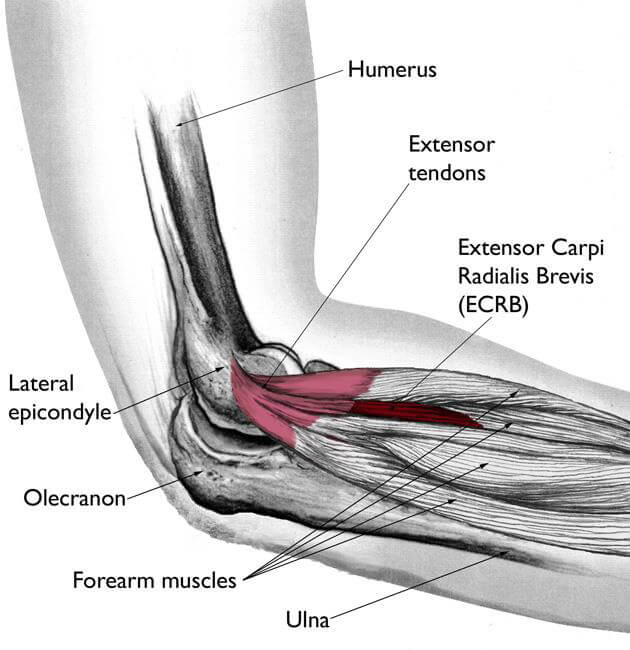The medical term for Tennis Elbow is Lateral Epicondylitis. The lateral epicondyle is a ridge of bone on the outside of the elbow where the forearm extensor muscles originate. As the suffix “itis” suggests, inflammation of the forearm extensor tendons causes pain, swelling and weakness. Movements such as turning a door handle, pouring water from a kettle, lifting and carrying shopping bags, or gripping/squeezing objects are often reported as painful.
Tennis elbow is an overuse/overload injury. Essentially, the repeated contraction of muscles under high loads (which effectively pull on tendons) causes the tendons to become irritated. For that reason, Tennis Elbow is a case of tendinopathy.
There is a total of six muscles which attach to the lateral epicondyle. One of these muscles, Extensor Carpi Radialis Brevis (ECRB), is the most commonly affected muscle of Tennis elbow, however any of the other five muscles can also be injured.
Effective treatments for Tennis Elbow and other tendinopathies alike include massage and dry needling to the affected muscles, shockwave to the affected tendon, and of course, strength training for the entire affected limb! Other modalities such as taping, bracing, ultrasound and topical creams may provide temporary relief of symptoms but do not show clinically significant long term effects. NSAIDs and stronger corticosteroid injections may be required for pain management where there is evidence of ‘partial’ or ‘full thickness’ tendon tears. Surgery is rare but may be needed for full thickness tendon tears. Acute Tennis Elbow can last anywhere between 2-4 weeks, whereas chronic and more severe cases can last up to 3-6 months.
FYI the medial epicondyle (on the inside of the elbow) is home to “Golfer’s Elbow”, or Medial Epicondylitis, and involves the forearm flexor tendons.



